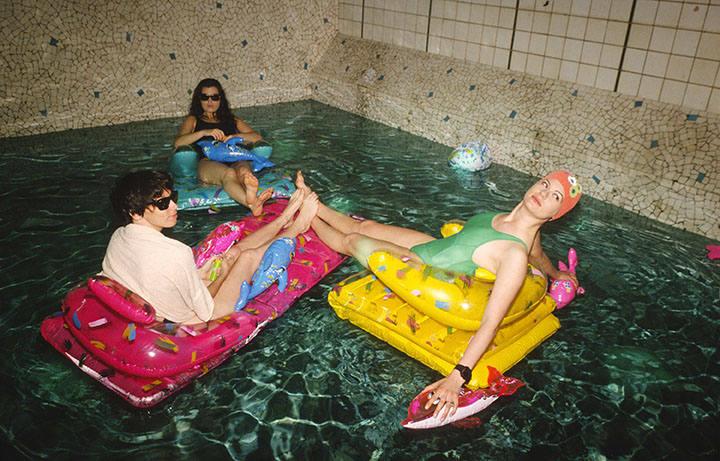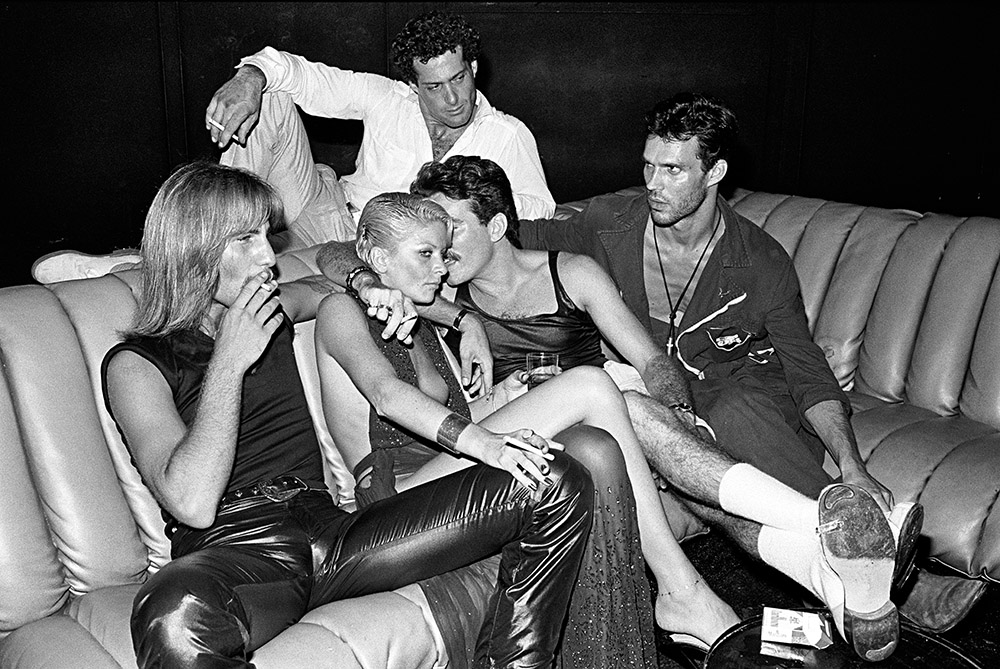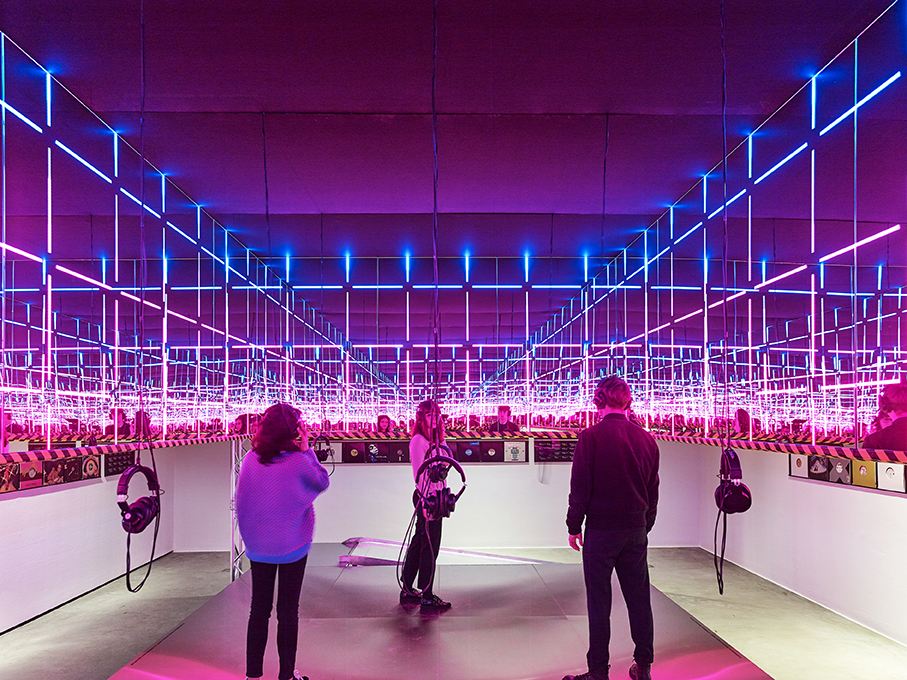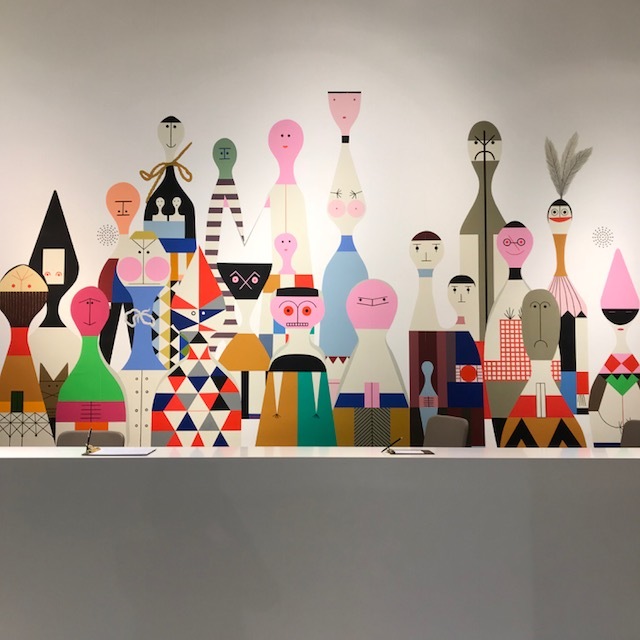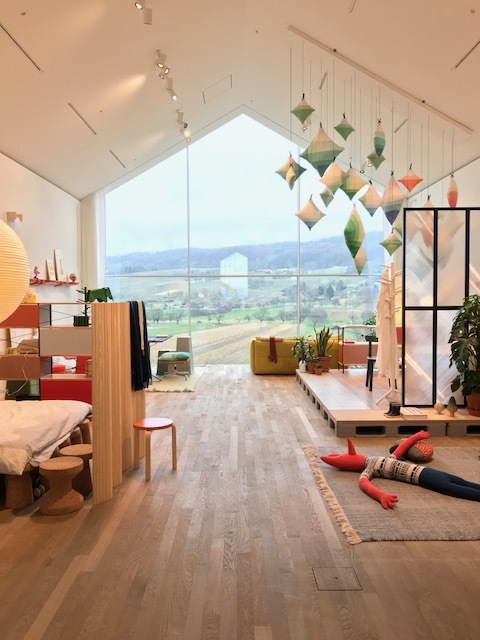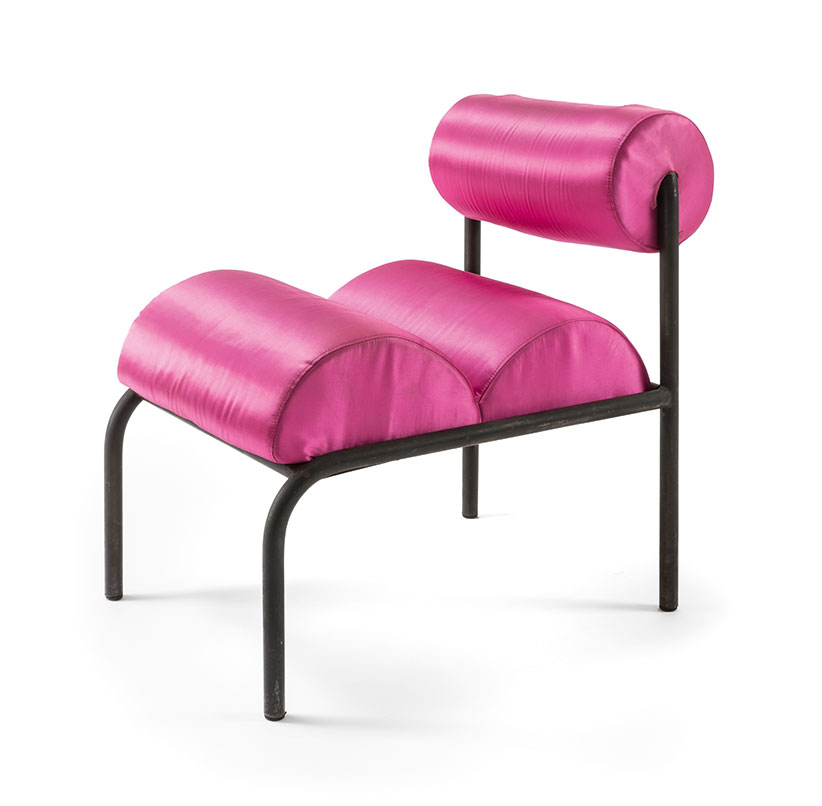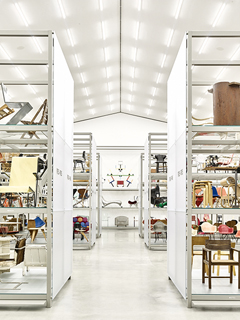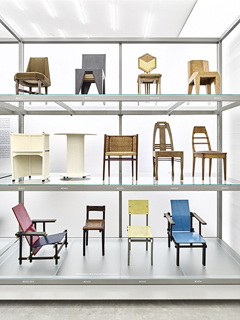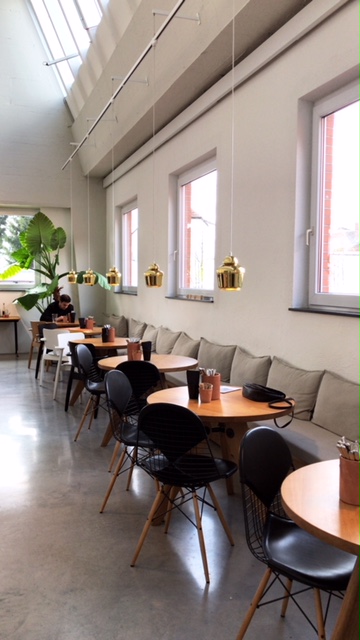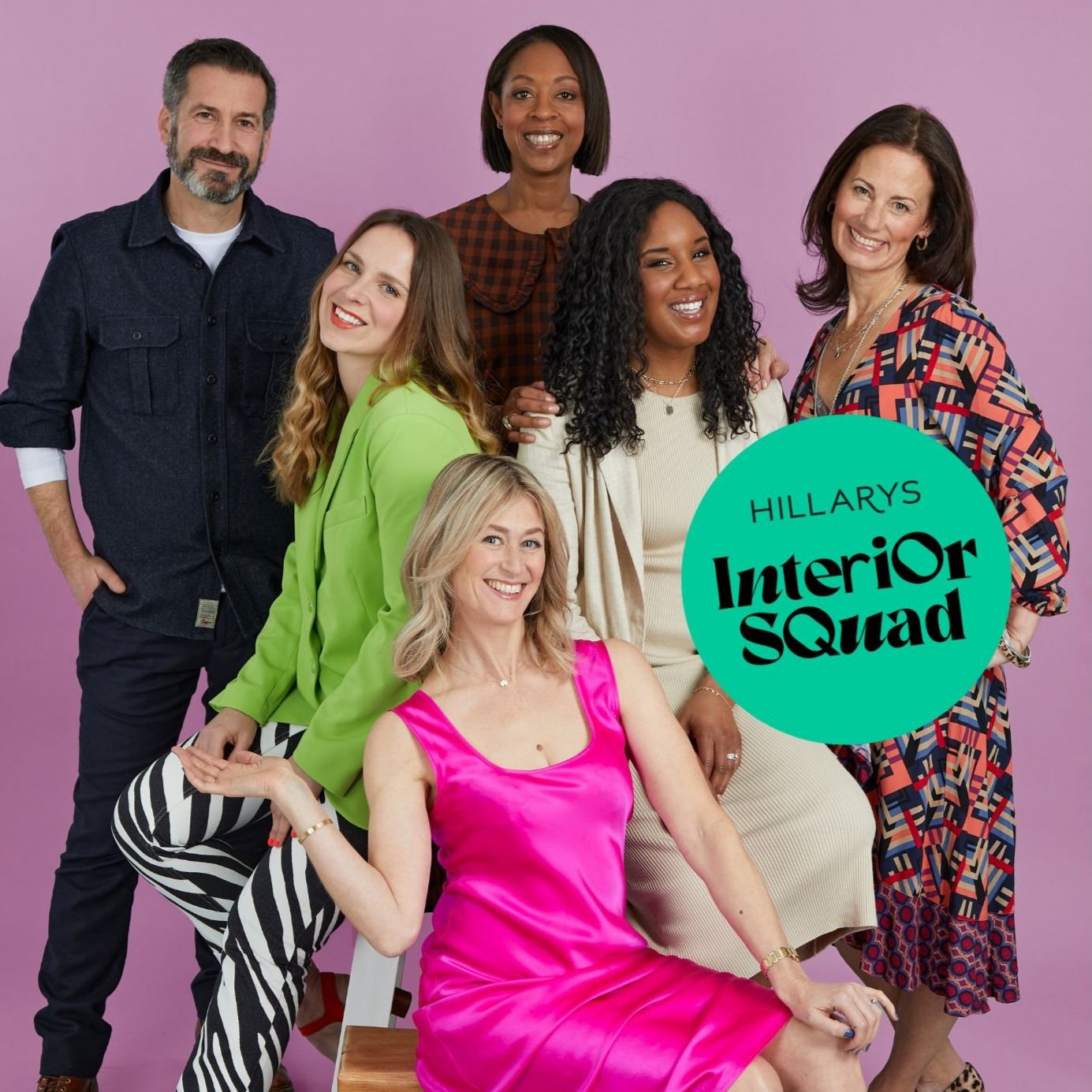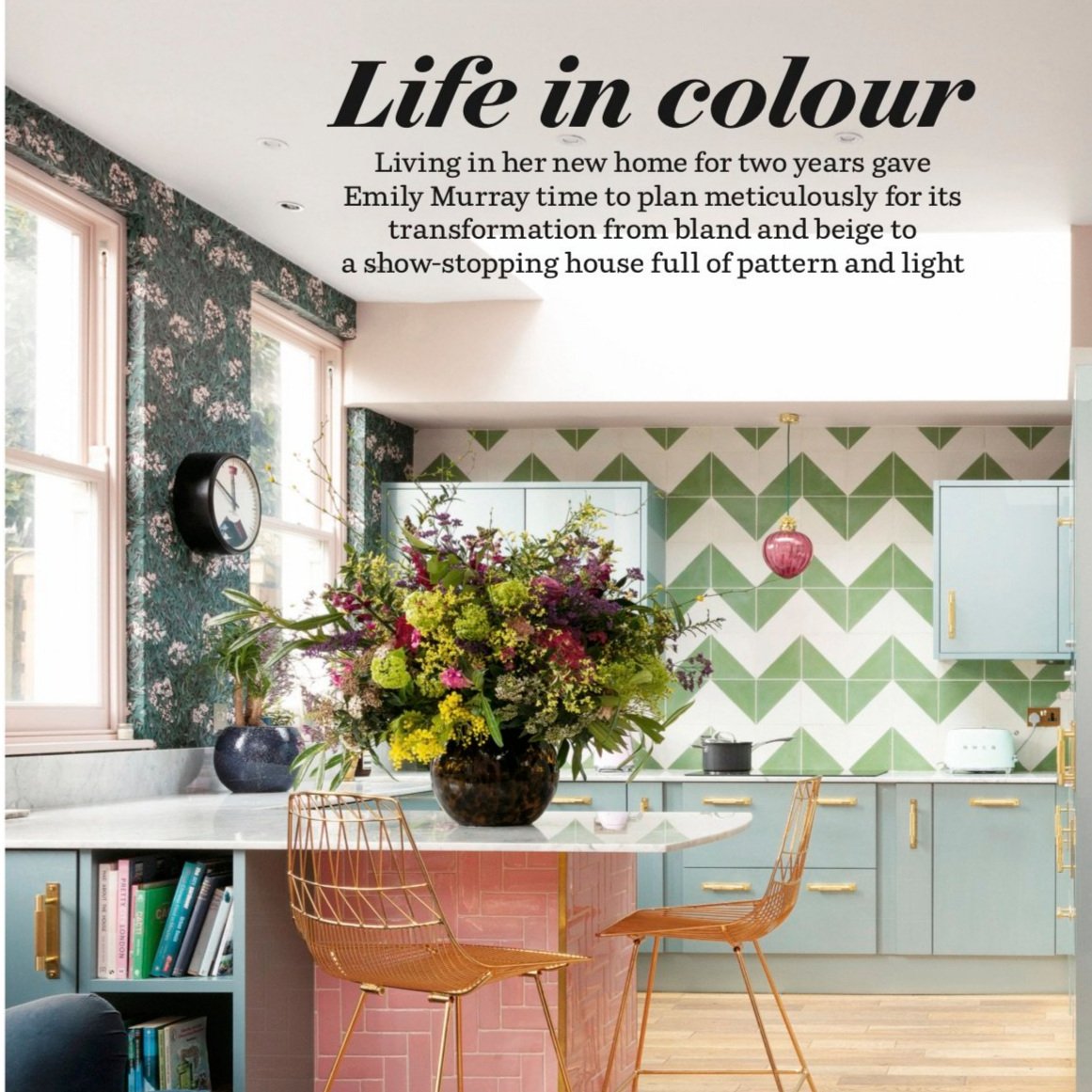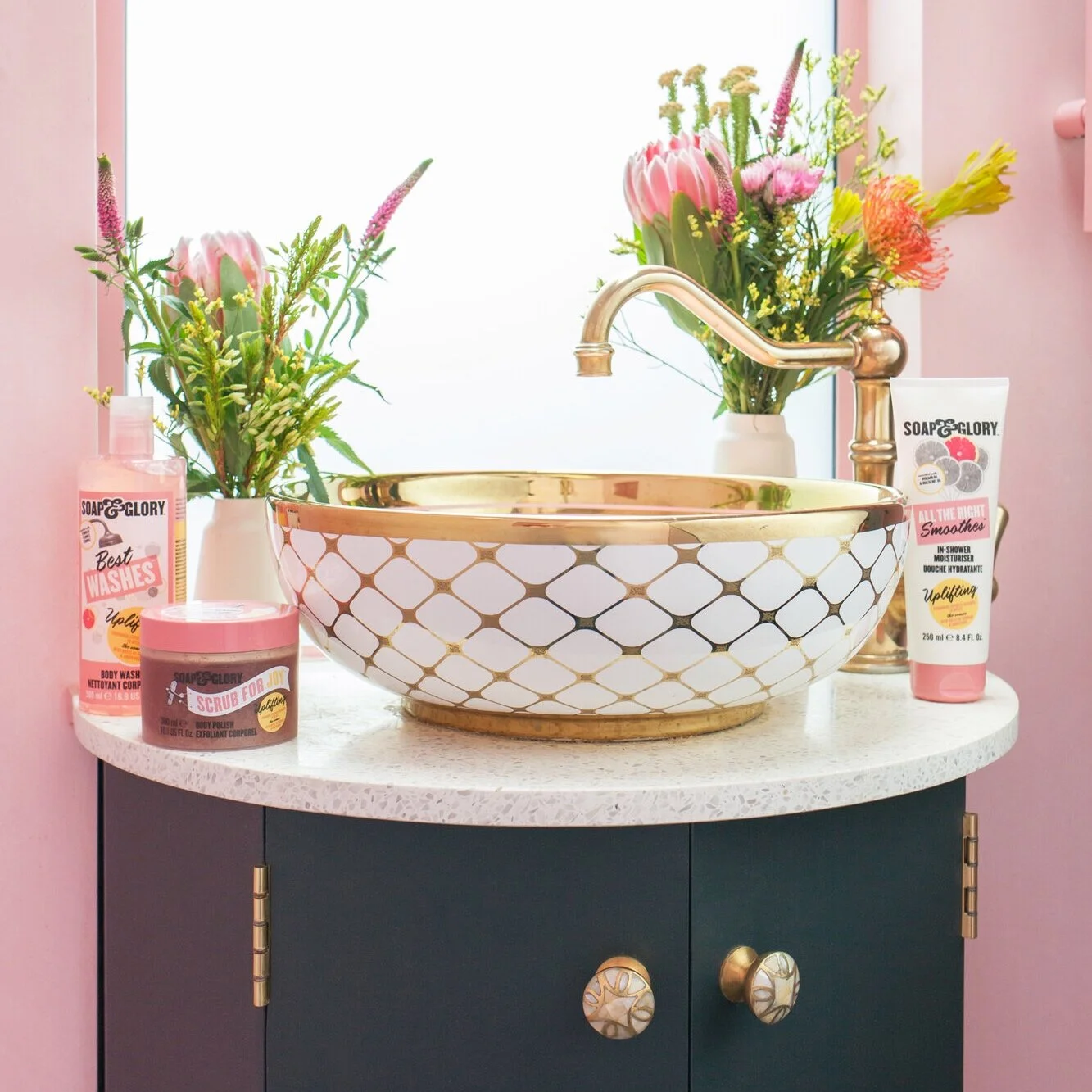MY CLUBBING YEARS spanned the 12 months between my 30th birthday and my 31st. In other words, the day from which I decided it was time to try something I’d previously shunned, and the day I discovered I was pregnant with my first child. In between was what I dubbed the ‘Year of the Party’, back in the days when I had control over my life and could achieve my years according to my own desires, instead of having the desires of my progeny thrust upon me.
I had a hell of a lot of fun during the ‘Year of the Party’ – more fun than I might ever be comfortable with sharing on a blog. When it ended, on the one hand I was all partied out and ready for the next stage of my life to begin (hilariously, I thought I was on a journey towards MORE sleep), but on the other I was just waking up to a whole new neon-infused world, which pregnancy had sadly forced me to abandon.
Which is why I was keen to visit Basel-based Vitra Design Museum’s exhibition entitled ‘Night Fever: Designing Club Culture 1960 – Today’; I wanted to find out what I’d been missing during those decades when I’d been: in All Bar One (most of the 2000s); geeking out (the 1990s), backflipping (the 1980s); being born (1970s – 1978 to be exact); or pre-birth (1960s). That’s a whole lot of nightclubbing to catch up on, and thanks to Vitra inviting me on a press trip to cover the launch of the exhibition (it opened on 17 March and runs until 9 September), that’s exactly what I was able to do.
Palladium, New York, 1985. Architect: Arata Isozaki, mural by Keith Haring
Inside the Night Fever exhibition/photo: Mark Niedermann
Central to the exhibition was exploring the historical relationship between clubbing and design, from the way nightclub buildings were architecturally planned, to the graphic design of the clubs’ branding and advertising.
Initially it felt a bit odd visiting a museum to observe what is essentially a participatory and visceral experience. Standing solemnly in your coat alongside other sober coat-wearers, reading descriptions of drugged-up experiences and looking at images and videos of clubbers who are totally out of it did feel a bit strange. It was part voyeurism, part clinical analysis of someone’s leisure time. Which actually turned out to be an excellent way to spend an afternoon.
Guests in Conversation on a Sofa, Studio 54, New York, 1979
And in fact, the Night Fever curators have done a great job of incorporating immersive experience in the exhibition – I especially enjoyed the interactive installation by Konstantin Grcic and Matthias Singer (below) which allows you to put on headphones and lose yourself in the music of four different musical styles – pre-disco, disco, house and techno – while a myriad of mirrors reflect an infinity of flashing lights. Took me back to good old 2009.
Night Fever's interactive installation by Konstantin Grcic and Matthias Singer/photo Mark Niedermann
I also loved seeing the original flyers, mirror balls and neon signs of clubs I didn’t even know existed but were cutting edge cool in their day. If only I’d started clubbing in my early teens and experienced the heyday of the Hacienda…but I’d still have missed getting covered in a sheet, playing the bongos and watching “snow” fall from the ceiling at the experimental Cerebrum club in New York in 1969. So, y’know, I don’t regret all those hours in the library/gym/dodgy wine bar after all.
Poster for the Nightclub The Electric Circus, New York, 1967.
Design: Chermayeff & Geismar
Inside the Haçienda, Manchester
If you’re in this part of the world (I hesitate to name a country; during our stay I was never quite sure if I was in Germany, Switzerland or France, as we were right at the junction of all three), I highly recommend visiting the Vitra Campus, site of the Vitra Design Museum, whether or not you decide to spy on the last six decades of clubbing.
It’s only 10 minutes from Basel but feels like it’s in a clean, green Teletubbies world of its own. And every aspect of the Campus space is so beautifully designed you can physically feel the effect on your wellbeing; barely through the reception doors I found the creative combination of eyecatching graphics, streamlined furniture and ergonomic design instantly relaxing, yet invigorating.
The reception desk at Vitra Haus
Vitra Haus
The Vitra Haus building shows how we would all live if our houses were 10 times the size, filled with cool af furniture and had floor-to-ceiling views over expansive (and no doubt expensive), manicured countryside. But if that sounds sterile I assure you it isn’t - Vitra understands the concept of playful design better than any other brand I can think of: the large pile of cushions begging you to dive in (I did, Insta Stories in hand); the stairs transformed into a kid’s cosy hangout; the attention given to creating a home that is child friendly without feeling like a design compromise. And if anything tickles your fancy? Chances are it’s for sale, but you don’t for a second feel like you’re being sold to.
Gianni Arnaudo, Aliko chair, designed for Flash Back, Borgo San Dalmazzo, Italy, 1972, Gufram
Another highlight for me was the Schaudepot with its incredible collection of chairs and furniture (over 7000 pieces) dating back to 1800, another opportunity to witness what happens when serious design meets a sense of humour. My favourite? Actually, my fave chair in the whole Vitra campus was this pink one from the Night Fever exhibition (above). The real joy of the Schaudepot lies in absorbing the incredible variety of what can pass for ‘chair’ and the fact that someone took the time to gather them all together for our viewing pleasure.
I can’t write a review of the Vitra Campus without mentioning the Depot Deli – the Schaudepot café designed by Ilse Crawford, with its selection of tasty-yet-healthy food. It also plays host to the coolest cup I’ve ever had the pleasure of drinking from (made from some super-tactile matt black material; I literally let out a gasp when I picked it up, such was the deliciousness of the grip). And those gold Artek pendant lights - yes please; click here.
Depot Deli
Finally, we had a tour of Vitra’s open plan offices. I confess, I wasn’t all that enthusiastic about this initially but, as my kids (and the cast of Made In Chelsea) would say, the workspace literally blew my mind (have you ever tried explaining the concept of a metaphor to a five-year-old? Not easy). THIS is how we should all be working: acres of clean, daylight-flooded, colourful space; multi-hued individual work pods; 360 degree soft seating; light which spills through portholes in the sky; mint green aluminum upholstered chairs in organic clusters (we saw this chair being made in the factory, which only added to my lust for it); and, at the entrance, a huge whitewashed wall waiting for you to scrawl your witticisms using a marker pen left out for that purpose.
Work as play; Vitra shows us the world as it should be. And despite all that hedonism, I didn’t even leave with a hangover.
I flew Easyjet from London Gatwick to Basel Mulhouse Freiburg airport, and stayed in Basel at the excellent Hotel Krafft and ate at the Restaurant Acqua, which also comes highly recommended

